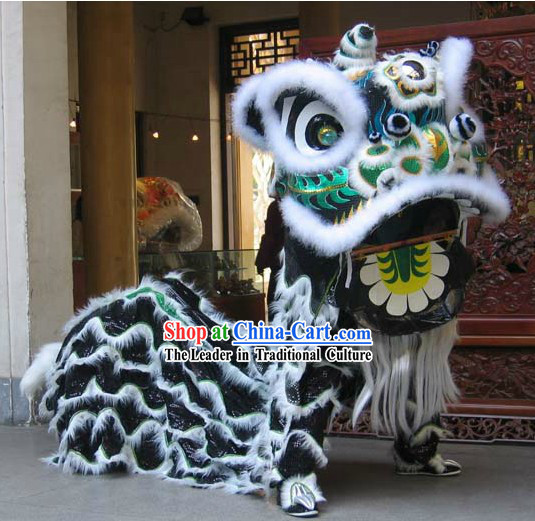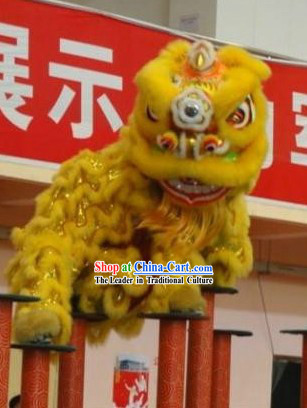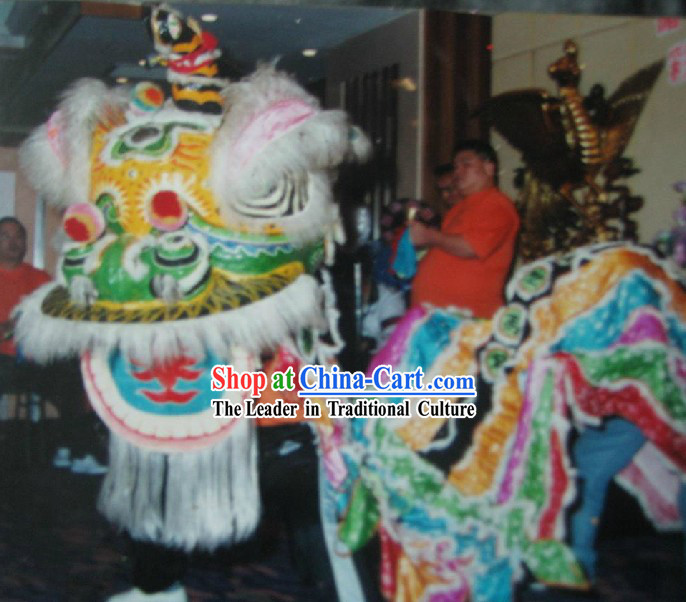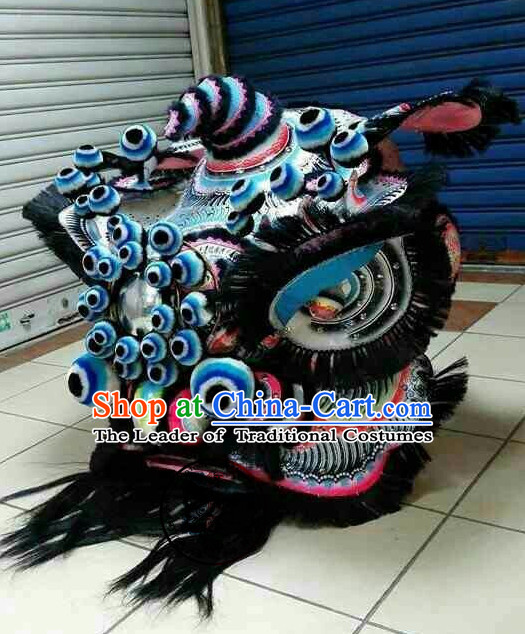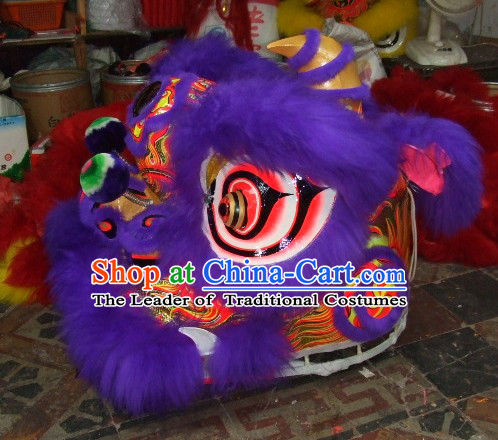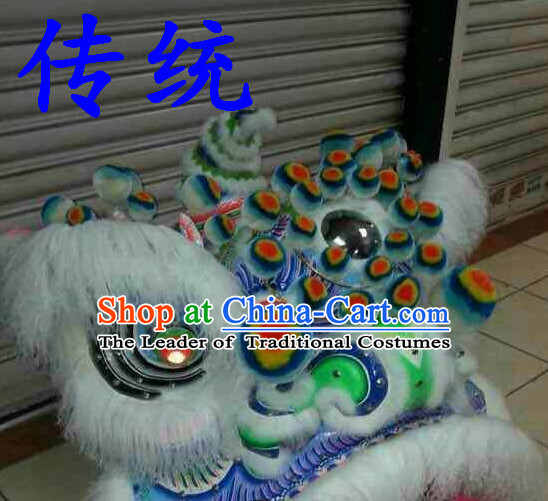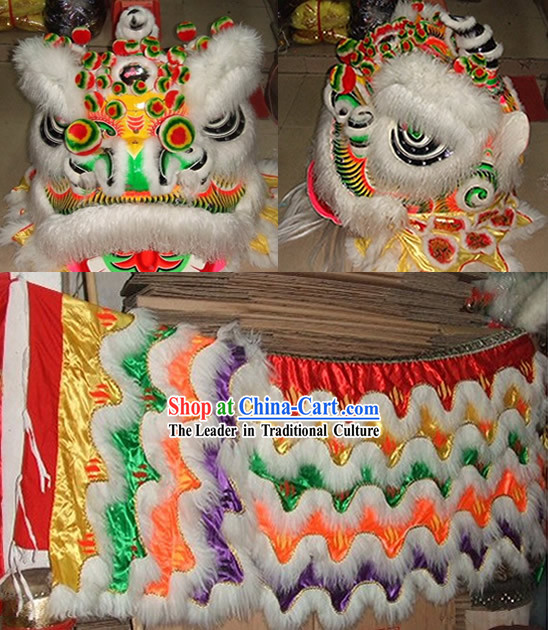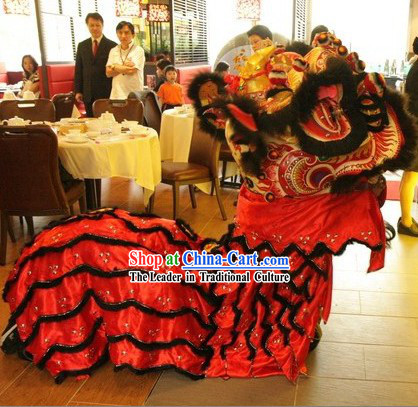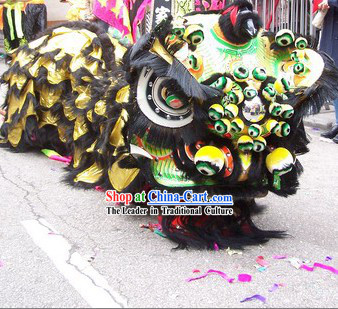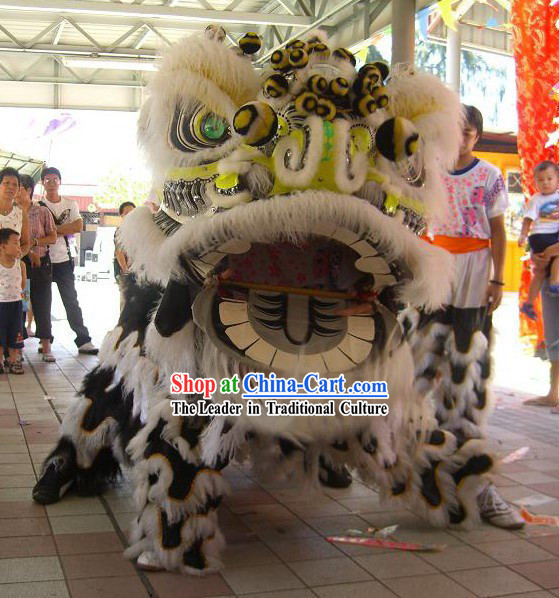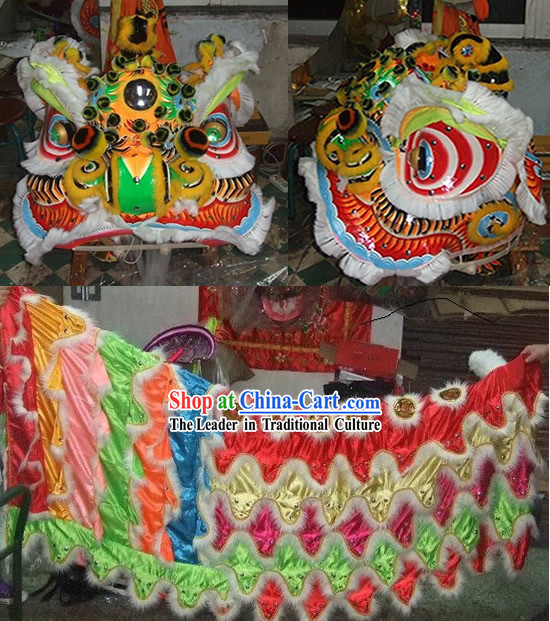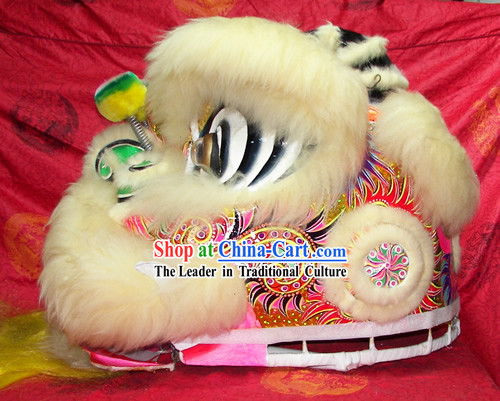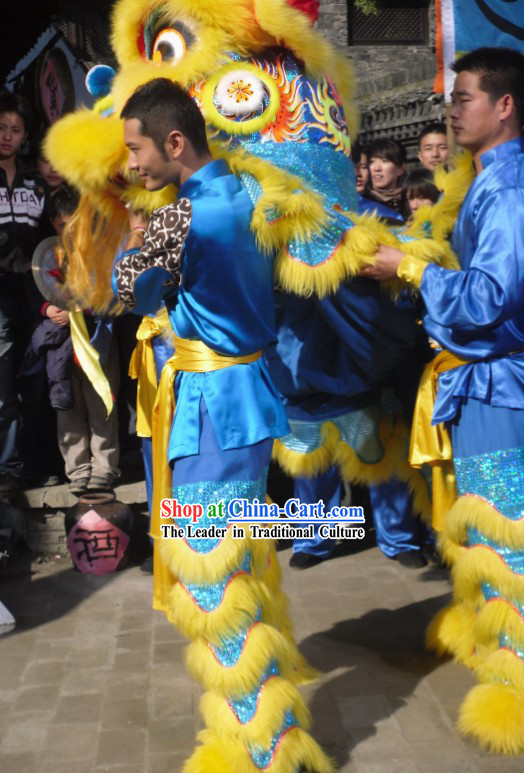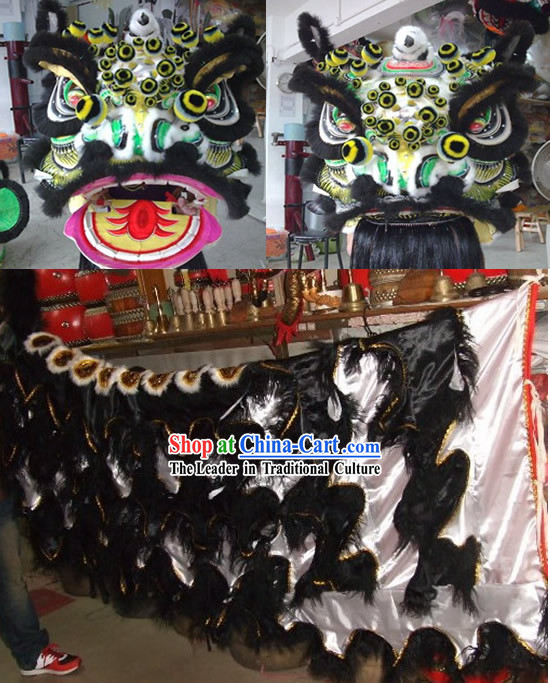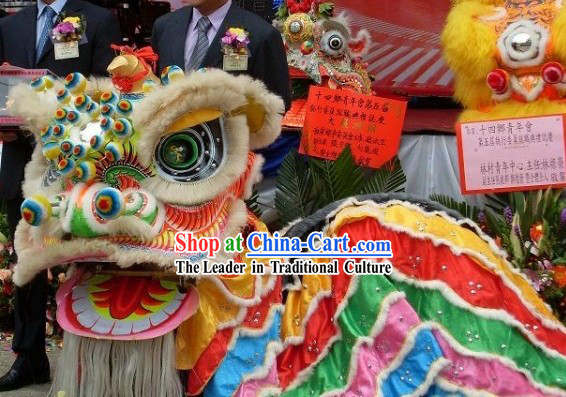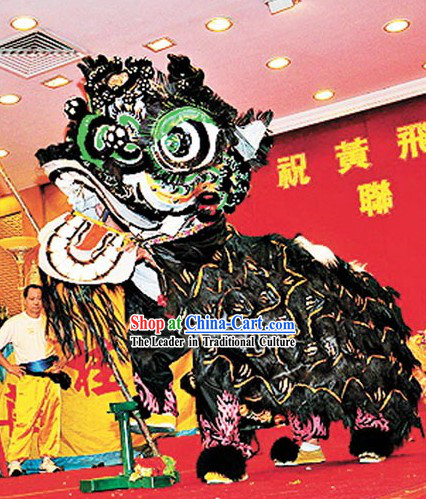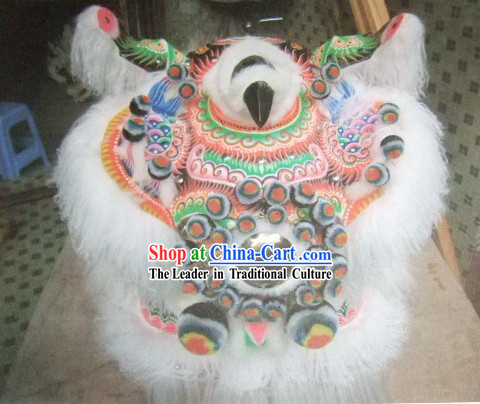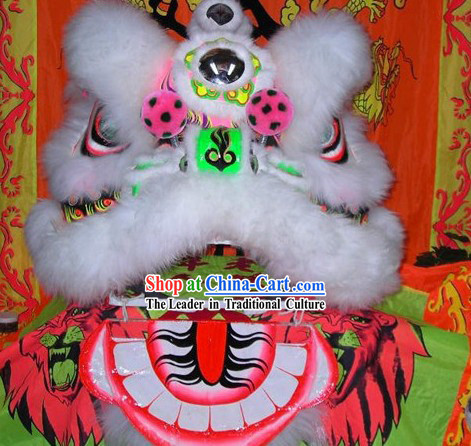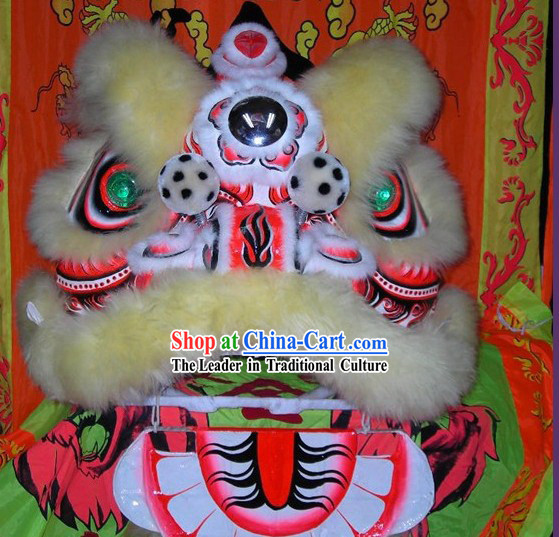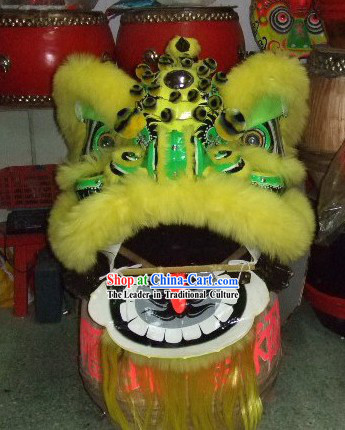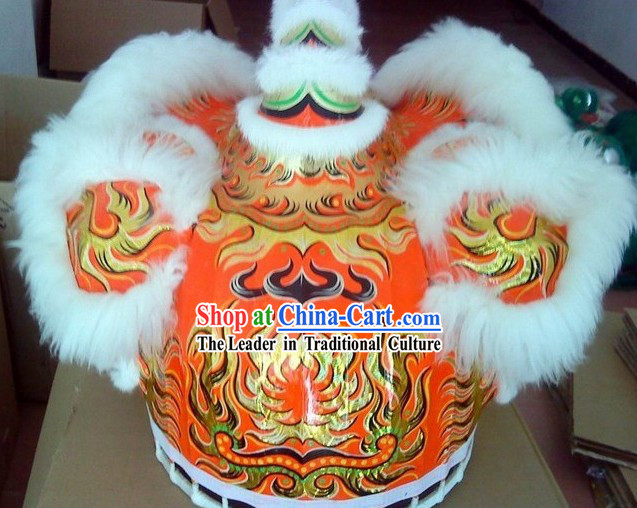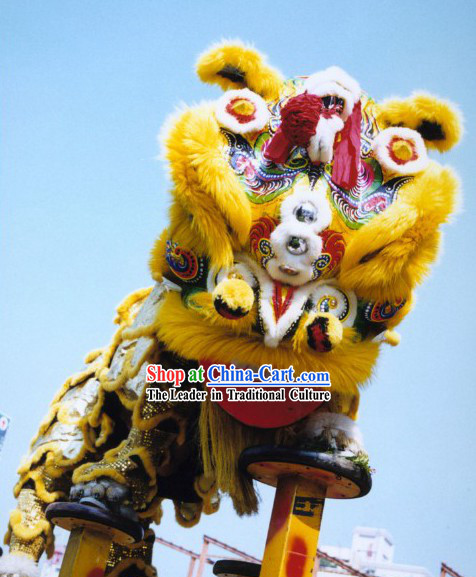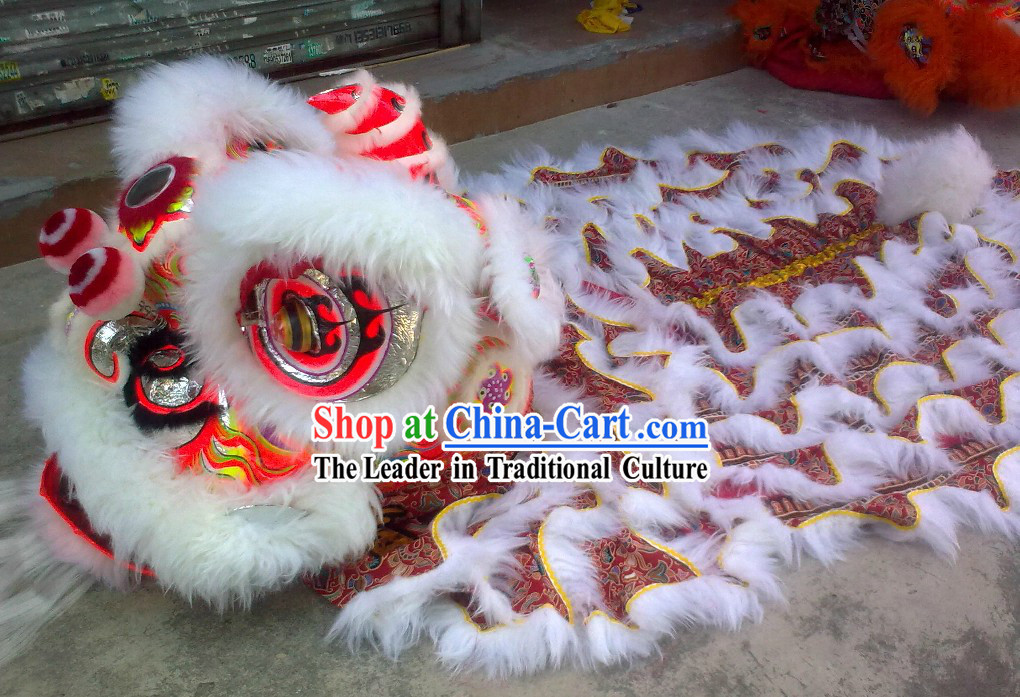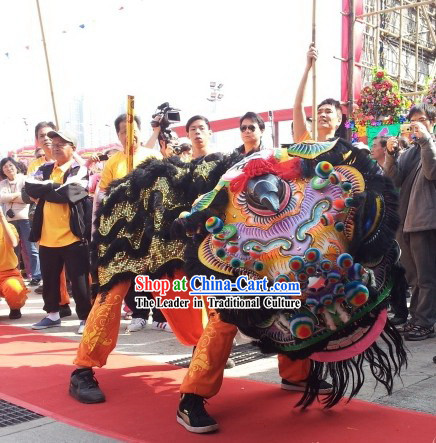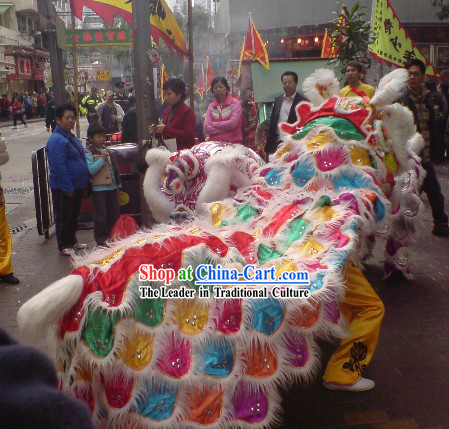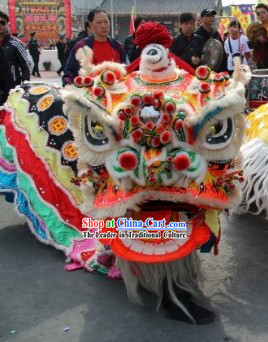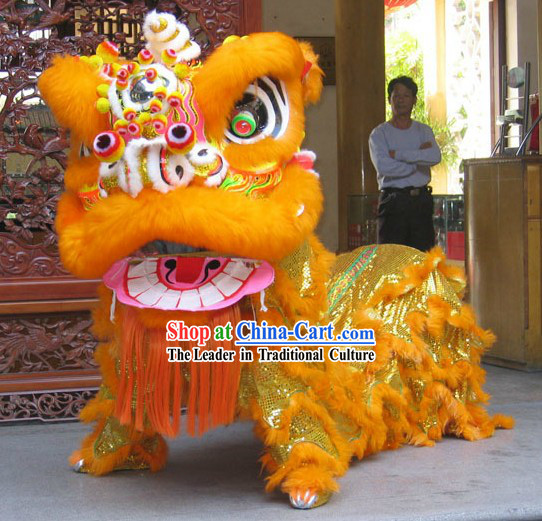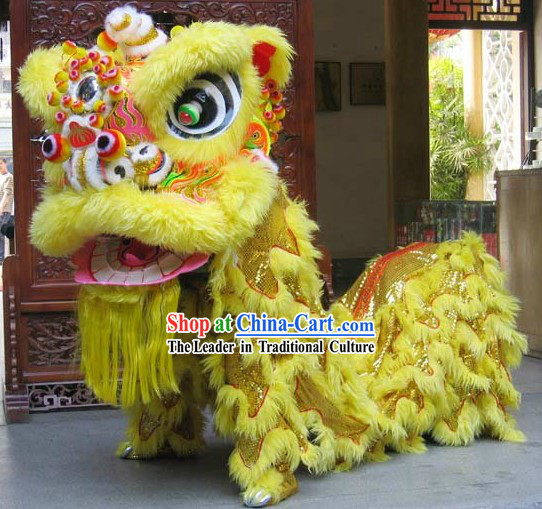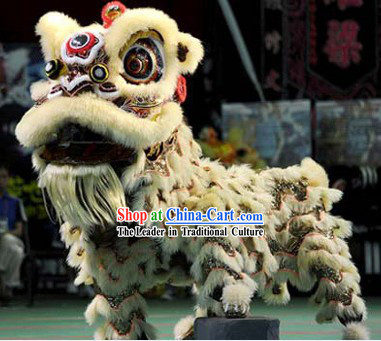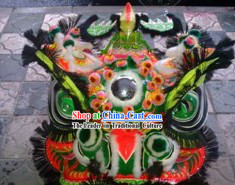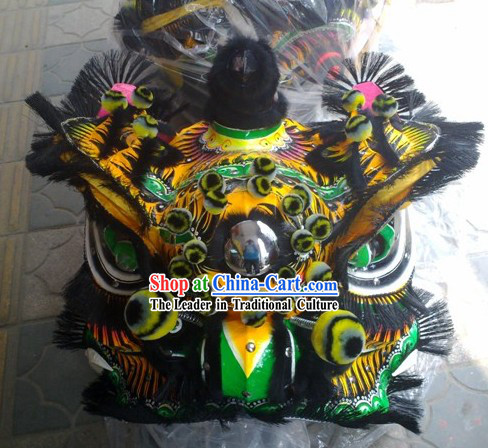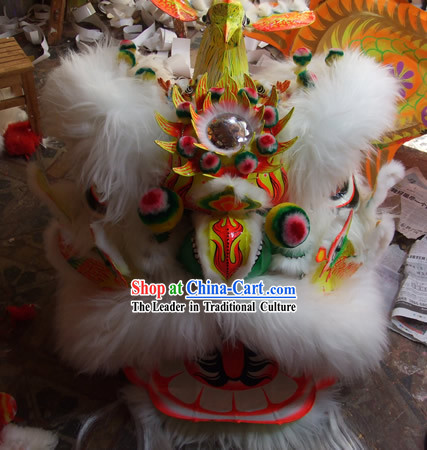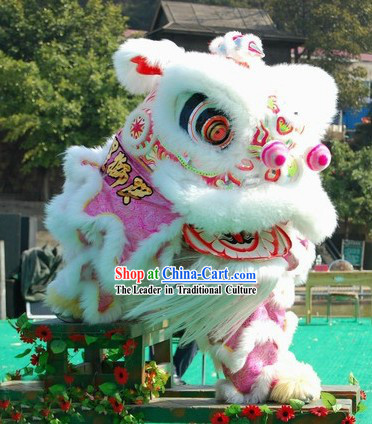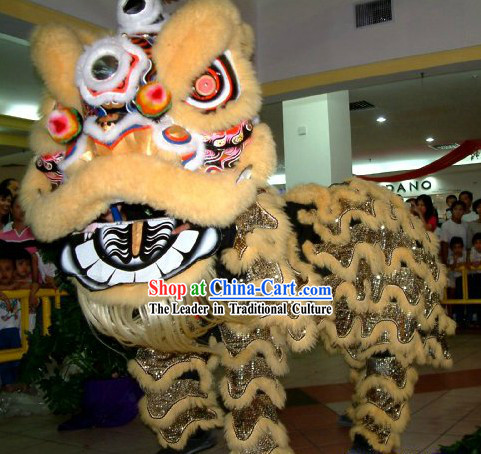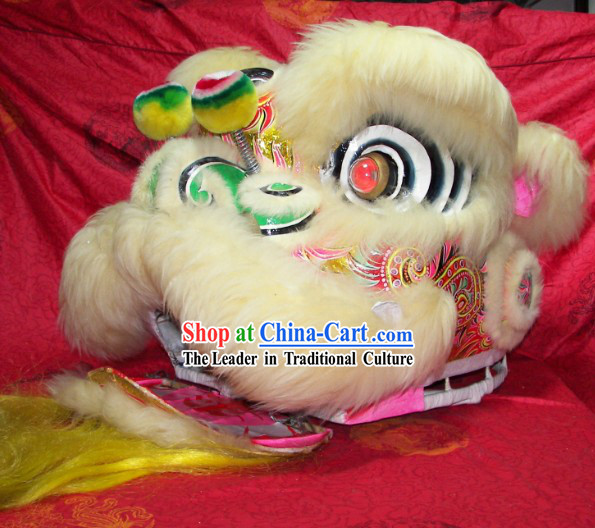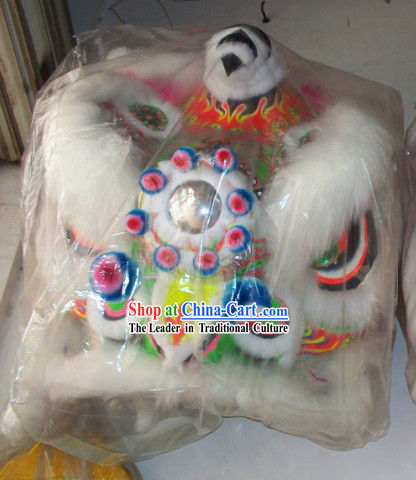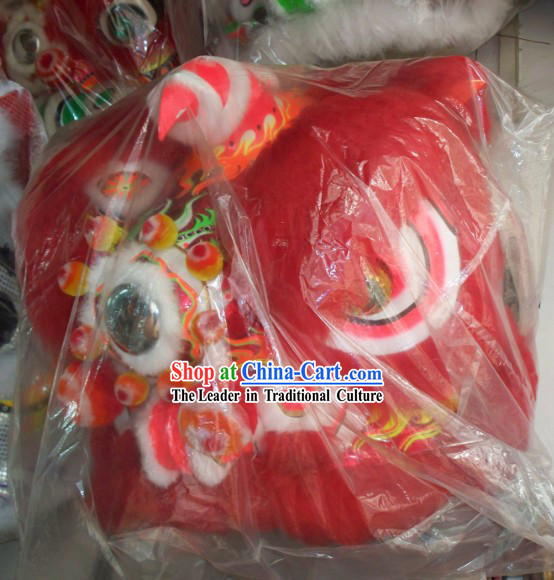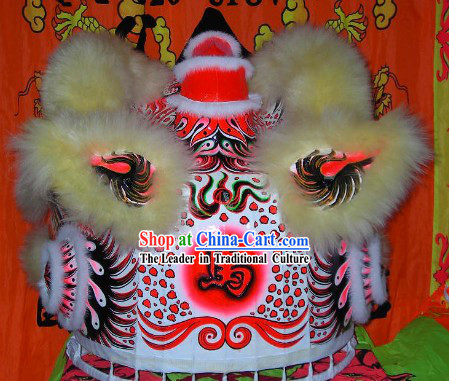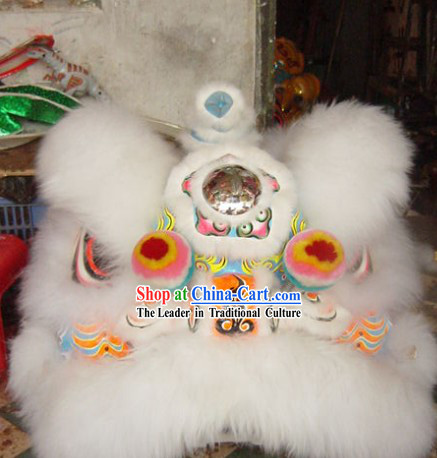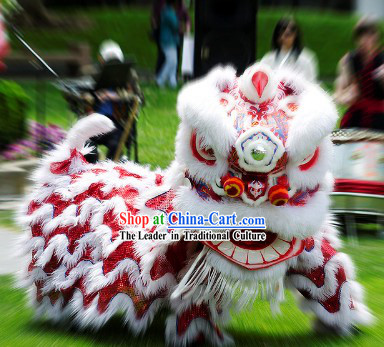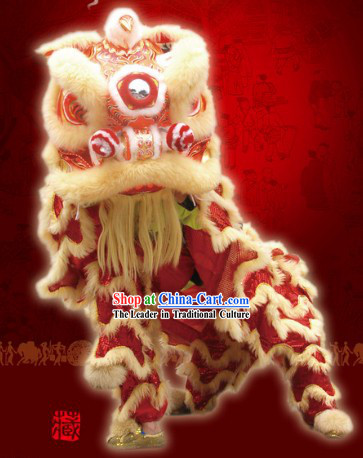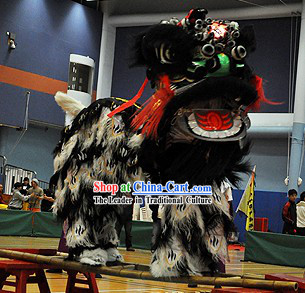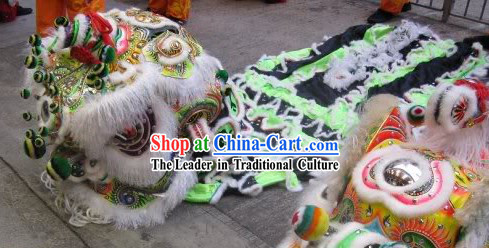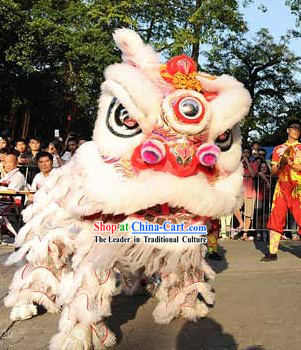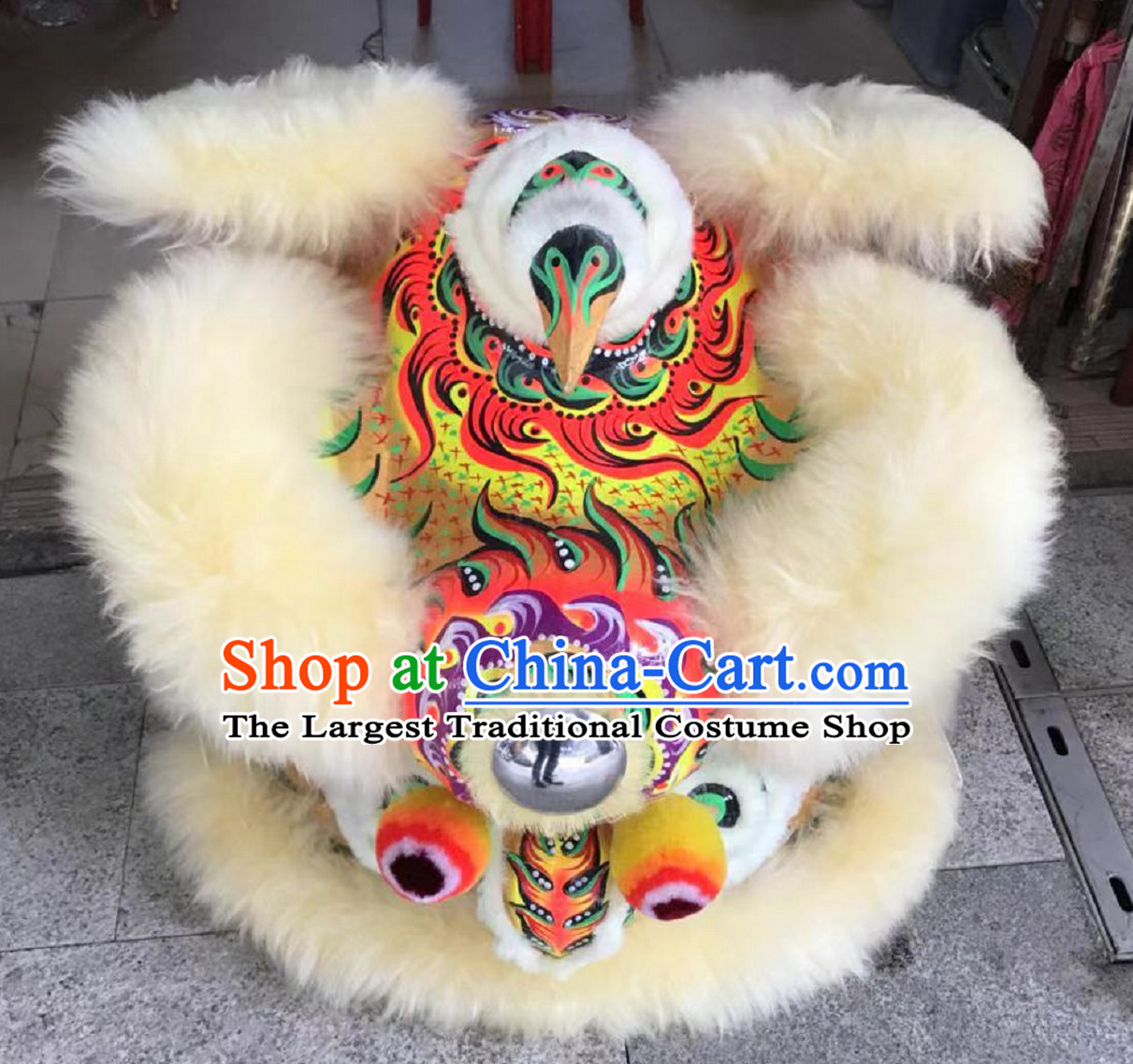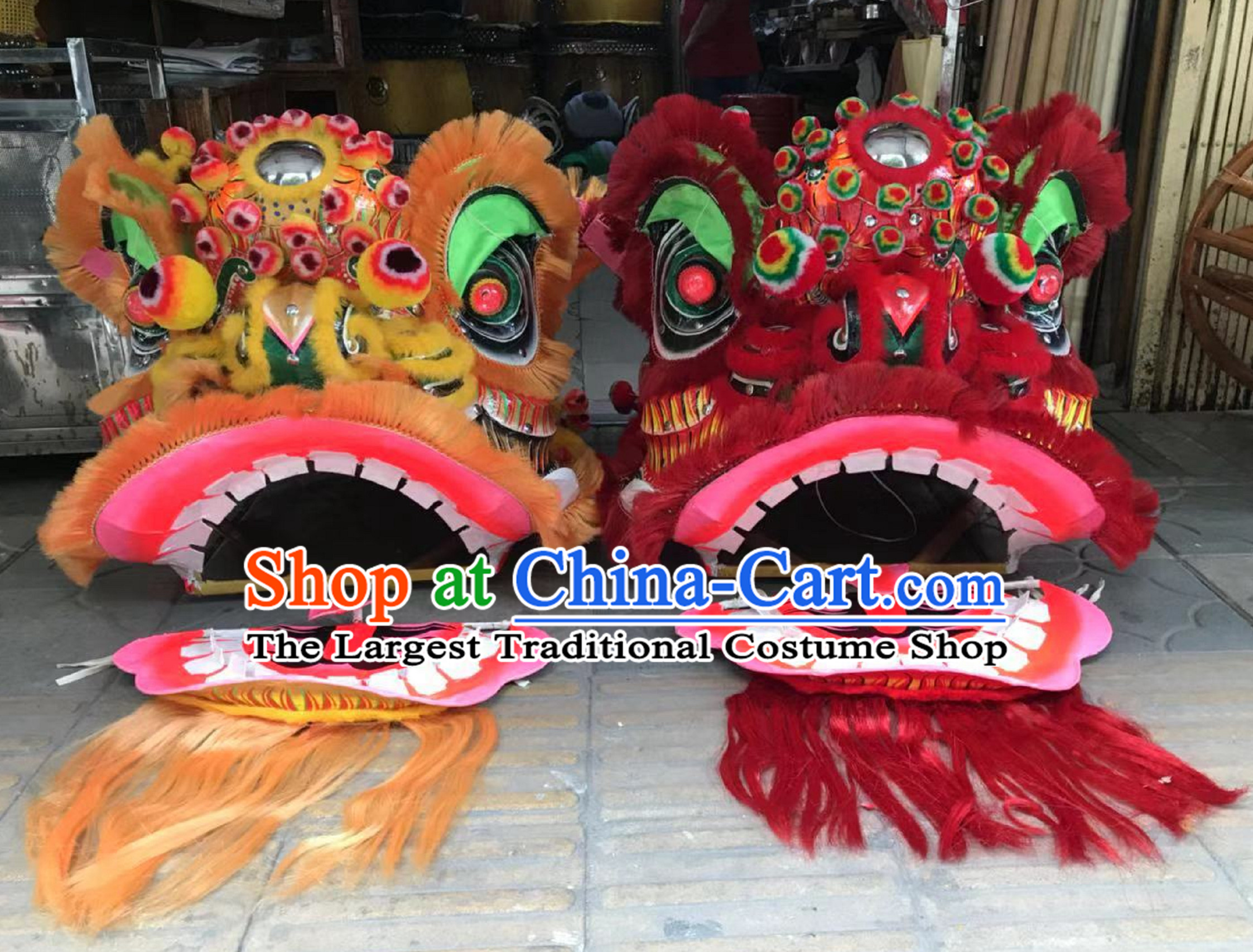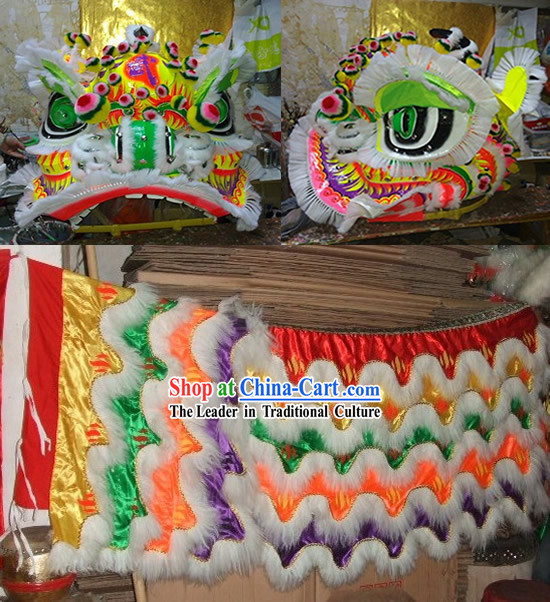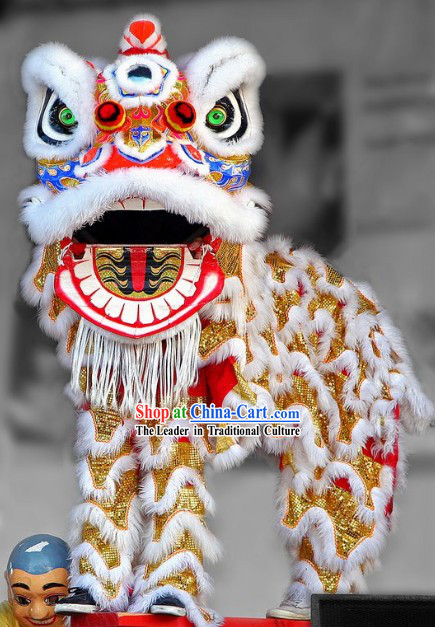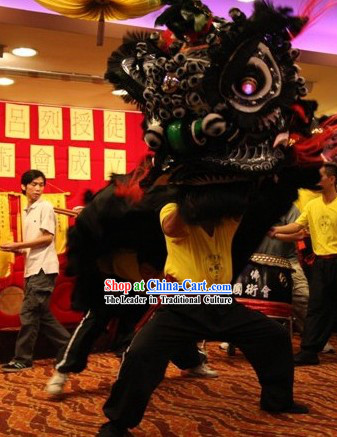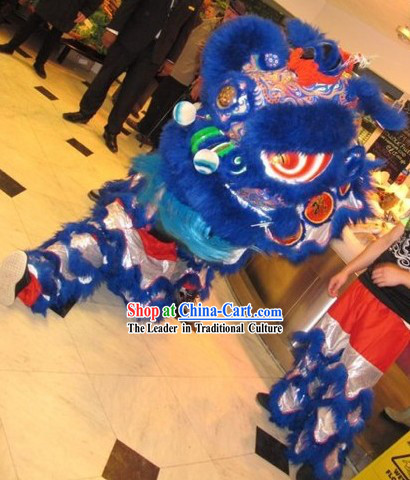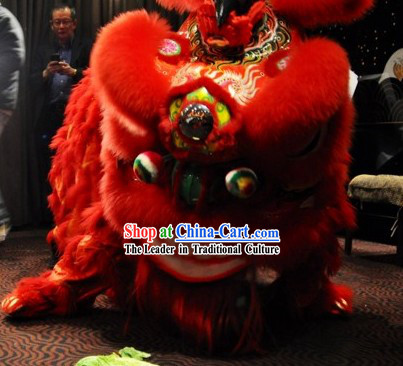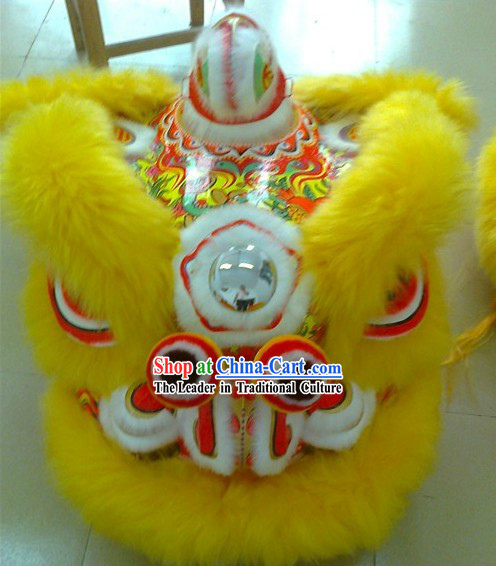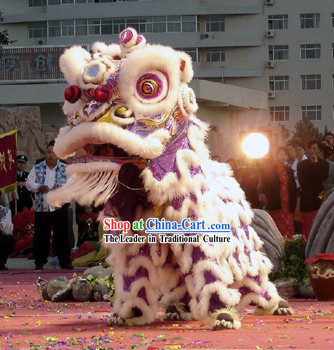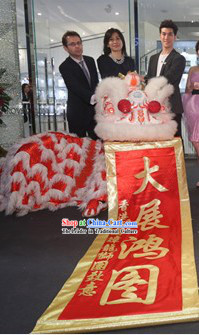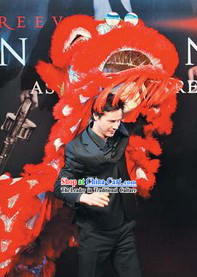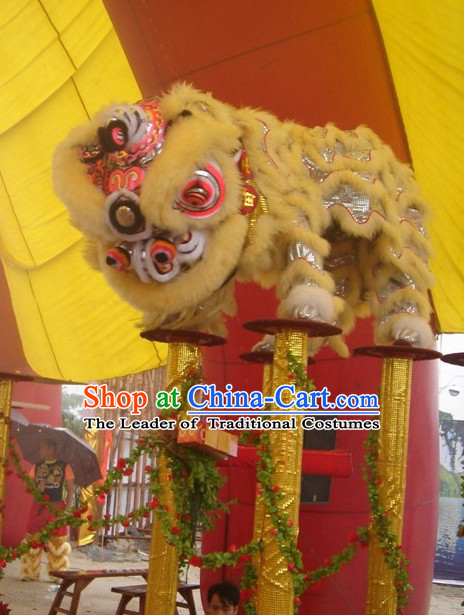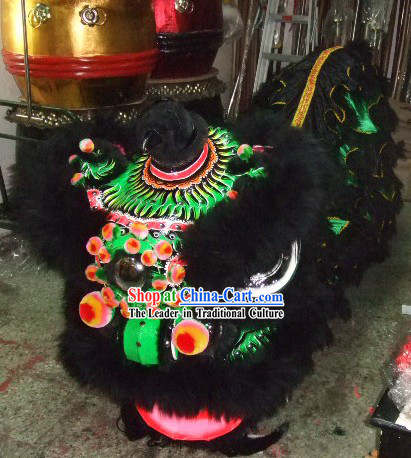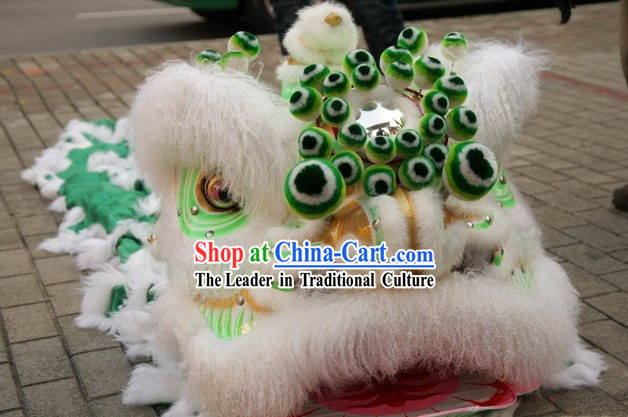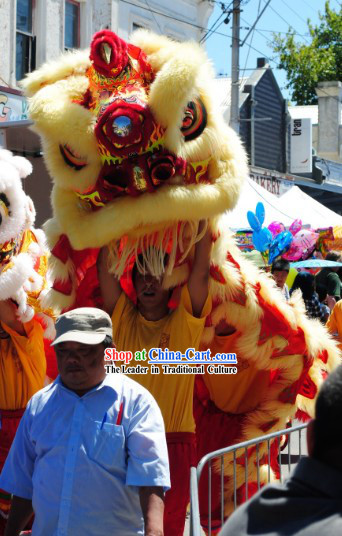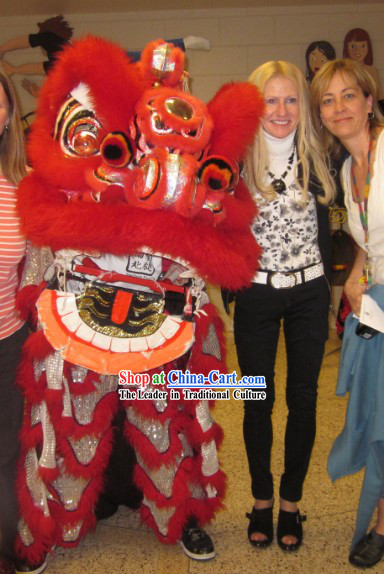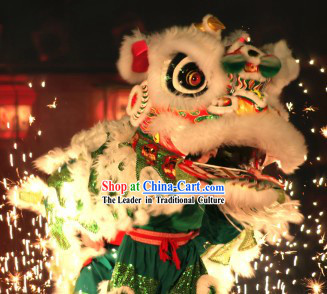
Click Related Pictures for More Audios:
"Classic Fut San Lion Dance Costumes Complete Set" is a grand and intricately designed traditional Chinese lion dance costume that embodies the rich cultural heritage and historical significance of this art form.
The set consists of various components, including the head, body, tail, and wings, all crafted from high-quality materials such as silk and fur.
Each component is adorned with intricate embroidery, patterns, and colors that reflect the unique characteristics of different regions in China.
The head of the lion dance costume is particularly striking, featuring a fierce expression and sharp teeth.
It is often made from a single piece of leather or fabric, which is then decorated with intricate designs and patterns.
The body of the lion dance costume is also highly detailed, with layers of fabric and padding to create a realistic and lifelike appearance.
The tail is typically made from a long piece of cloth or leather, which is attached to the back of the body using a series of knots and ties.
The wings of the lion dance costume are another important feature, providing both protection and mobility for the dancer.
They are often made from lightweight materials such as paper or bamboo, but can also be made from more durable materials such as leather or canvas.
The wings are attached to the body using a series of straps and buckles, allowing the dancer to move them freely while performing their dance.
In addition to its aesthetic appeal, the Classic Fut San Lion Dance Costumes Complete Set also has significant cultural and historical significance.
This dance form originated in China during the Tang Dynasty (618-907 AD) and has since become an integral part of Chinese culture.
It is often performed during festivals and celebrations, such as the Lunar New Year, where it symbolizes good luck, prosperity, and happiness.
The intricate design and craftsmanship involved in creating these costumes are testament to the skill and dedication of Chinese artisans.
They take great pride in their work and strive to preserve the traditions and values of their culture through their art.
By wearing these costumes, dancers not only honor their ancestors but also share their cultural heritage with others around the world.
